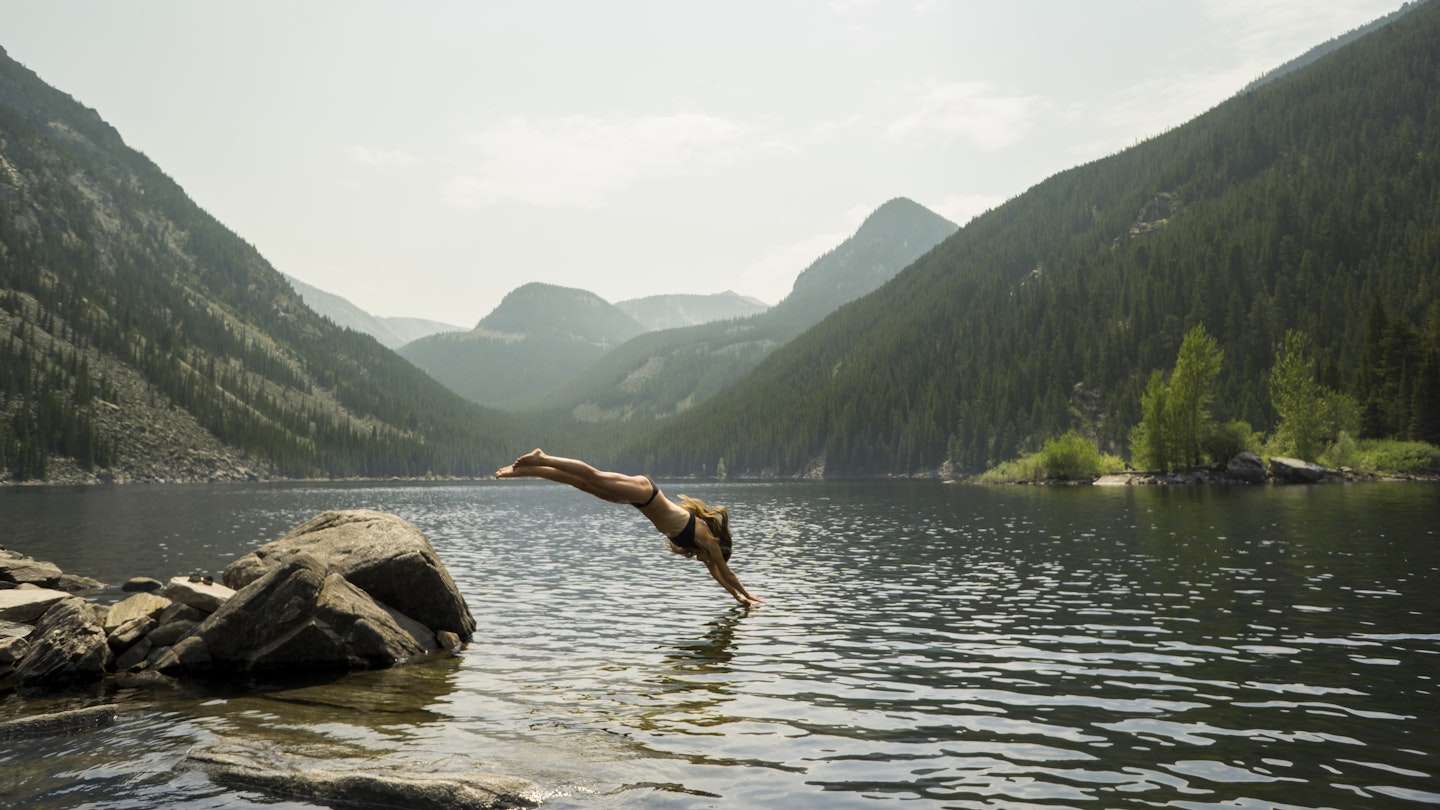The best time to visit Bozeman, Montana, depends squarely on your interests. Summer is an excellent choice for backpacking trips, fly-fishing, or enjoying camping with family. Moreover, these activities are also commendable during the fall, when campgrounds and trails are noticeably quieter. Winter sees fewer cultural events; however, it offers heavenly opportunities for skiing and snowmobiling.
There’s no bad season for visiting Bozeman; you just have to pack the right equipment and clothing. Here’s a concise guide on the best times to experience Bozeman.
June through August: Outdoor Fun and Camping
Bozeman’s brief summer months are focused on outdoor activities. The warm days and cool nights create perfect camping conditions; thus, these are the best months to explore mountain trails. This period marks prime road trip season in Montana, especially for those venturing south toward Yellowstone National Park. Consequently, it’s wise to secure summer accommodations well in advance, even for campsites.
The weather begins to warm up in June, though this month is also one of the rainiest of the year. Weekly farmers markets roll out the welcome mat for summer’s bounty, running until September and showcasing locally sourced produce and crafts. Expect some lingering snow in higher basins and on north-facing slopes. Statistically, July is the hottest month, with temperatures soaring above 80°F (27°C) on occasion above 90°F (32°C). Adventure seekers can head to the mountains or cool off floating down the Madison River. Downtown Bozeman kicks off a lively season of weekly live music and food stalls, lasting until mid-August.
August brings warm, dry days that offer ideal outdoor weather alongside significant cultural events. Families can enjoy activities like face-painting at the Sugar Pea Festival, Bozeman’s largest arts event. Additionally, food enthusiasts shouldn’t miss Montana’s delicious flathead cherries and huckleberries.

April to May: Wildflowers Fill Meadows
Springtime in Bozeman is marked by comfortable temperatures; however, many hiking trails and access roads at higher altitudes may still be under snow, making mud a common issue on trails. Cyclists can rejoice as Yellowstone National Park opens its roads to non-motorized transport during the first two weeks of April. Daytime temperatures rise above 60°F (16°C) in May, making it suitable for lower-elevation hiking through stunning meadows of Rocky Mountain wildflowers, while higher valleys remain snowbound.
September and October: Best for Crowd-Free Hiking
Fall is a fantastic time to explore Bozeman. After Labor Day, crowds thin out, as school begins and students return to Montana State University, making it ideal for a quiet camping trip. Days remain warm, evenings are crisp, and the pesky mosquitoes of summer finally disappear. While forest and park service campgrounds start to close in mid-September, the brilliant fall colors and cool weather create a perfect setting for backpacking, complemented by the melodic sounds of elk bugling. Many popular summer activities, farmers markets, and outdoor events begin to wind down in town.
Idyllic Indian summers often bring temperatures above 70°F (21°C) in October, although snow can also make an appearance. Hunting season commences across Montana, so it’s advisable to wear bright colors while hiking in remote areas.

November to March: Best for Skiers and Snowboarders
Winters in Montana can be long and severe, with December average lows around 12°F (-11°C) and snow accumulating significantly. This marks the low season for hikers, bikers, and road trippers deterred by challenging winter driving conditions.
For skiers, however, the perspective shifts dramatically. December to March is prime ski season at Big Sky and Bridger Bowl, offering fantastic opportunities for cross-country skiing, snowmobiling, snowshoeing, and dog sledding.
November sees average temperatures hovering around freezing, with highs barely above 40°F (4.5°C). As Bozeman preps for winter, Yellowstone National Park closes most of its roads and facilities by the second week of November, and Big Sky transitions to a quieter phase until its official reopening on Thanksgiving. Ski enthusiasts can find great deals on discounted ski passes and accommodations at Big Sky in December, especially during the first week when snowfall is less reliable. Don’t expect temperatures to rise above freezing in Bozeman, as even the bears are hibernating.
The coldest average daily highs occur in January, around a numbing 31°F (-1°C). Warm ski gear is essential; however, the excellent cross-country skiing and wildlife-watching opportunities in Yellowstone National Park remain noteworthy highlights. Ideal skiing conditions prevail—stay vigilant for the blue light above the Hotel Baxter’s rooftop sign downtown; when it illuminates, it indicates fresh snow at the nearby Bridger Bowl ski resort. The winter season in Yellowstone typically wraps up in March, and the first hints of spring begin to emerge. A cultural highlight during this time is MSU’s annual Native American powwow, showcasing vibrant dancing, drumming, food, and crafts.





